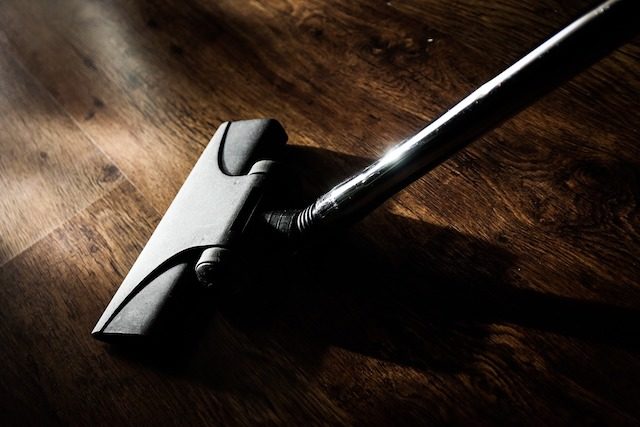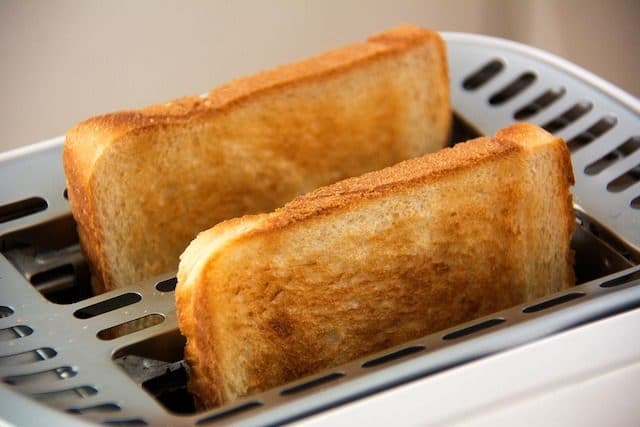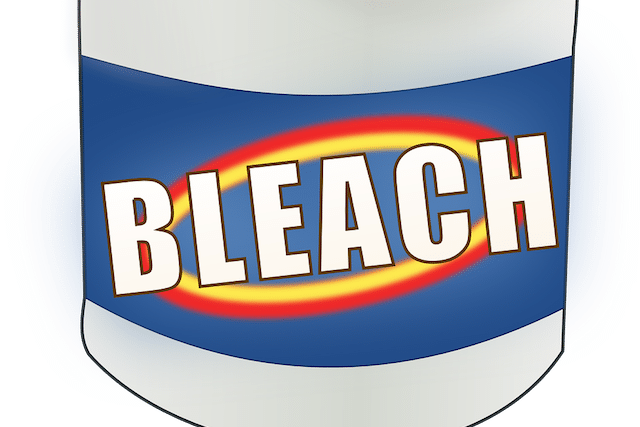Dangers are often associated with far off places, while fatal mishaps are often written off as either blatant foolishness or freak accidents. Yet a variety of dangers are surprisingly common and lurk nearby from objects and activities seemingly mundane. Today, discover the deadliest hidden dangers in this startling review of everyday extreme hazards.
10. Vacuums

Did you know that vacuum cleaners are also killers? Especially when combined with the common task of vacuuming stairs, a constant home duty given the proliferation of two story and even — gasp! — 3 and 4 story houses. It might shock many people how often serious accidents occur from vacuuming stairs. It’s a common cause of death. Furthermore, burns, electric shock and serious tissue damage are known to have occurred all from lack of sufficient care with the mundane household vacuum.
Increasingly, research is highlighting the often overlooked but awful danger presented to young children by vacuums, which can inflict terrible injuries on children who are at floor level and get in the way. In one case, a child suffered burns described as fourth degree after getting his hand stuck in a vacuum cleaner with which he was playing, despite parental efforts to get him away from the machine. People have also fallen to their deaths or suffered serious injuries while vacuuming stairs, getting caught in the hose or stumbling with the handle and losing their balance.
9. Toasters

Toasters can be killers. Did you know that a toaster may fry a person as quickly as a piece of bread, or start a house fire? For starters, toasters can get stuck, which leads many people to thoughtlessly grab a nearby implement to try and jab at it to free the offending food item or get it back. The trouble is, metal conducts electricity, and electrocution can result. According to American injury lawyers, around 700 unfortunate souls (some of them reckless people; you decide), lose their lives to something as stupid as a toaster accident every year.
Toasters should be replaced regularly as they are a wear item that becomes less reliable and thus less safe with use and time. Avoid plugging in or unplugging a toaster with wet hands. In addition to the danger of electrocution posed by the careless, they can also be a fire hazard should they malfunction, either shorting out or setting the toast itself on fire. Never leave a toaster unattended and be sure to leave it unplugged when not in use. Safety features on many newer toasters reduce the risk of being killed by probing a toaster, but still, remain cautious.
8. Bleach

Bleach contains chlorine, and is also capable of ending a life should it be mixed with the wrong chemicals. The trouble is, these are some very common chemicals, such as ammonia or acid-based household cleaners. Bleach can deliver horrific chemical injuries. After all, it is quite similar to banned chemical weapons in its behavior when mixed with such common products, turning your home into a World War One trench scene. Straight bleach is a the leading cause of child home poisoning cases, taking lives and inflicting substantial harm every year. It has also tragically been used as a weapon of poisoning attempts in a number of cases, often leading to arrests because of the noxious smell.
Accidentally swallowing bleach, which can happen especially if mislabeled or if children get into the chemical, will burn the mouth, throat, esophagus and stomach, and also causes vomiting, delirium, chest pains and blood pressure drops. Coma and death may follow. First aid includes drinking milk or water, if that is all that is available, and getting the patient to an emergency room as fast as possible. Symptoms may persist long term from burns. Breathing bleach fumes presents health risks, and it must be used in a well ventilated area and never mixed with ammonia or acids like vinegar.
7. Dressers & Bookcases

So many deaths have occurred when heavy wooden structures used as book cases, dressers or shelving fall on home residents; sometimes adults who pull on something, sometimes children who climb on them. Book shelves should be anchored to the wall — especially when they are tall — in earthquake zones or if children are in the home. Horrible indeed is the fact that the statistics reveal a childhood death by falling furniture occurs in the United States every two weeks.
This statistic is far from acceptable and could be remedied by a little care and a lot of common sense. Namely, anchoring furniture to the wall. Having drawers open and full may also topple dressers, even if no one pulls or climbs on them. Dressers, book cases, shelving and other heavy furniture items can trap and suffocate a victim, or simply cause crushing internal and external injuries that prove fatal from the blunt trauma and pressure when they fall over. In one particularly disturbing case, a certain brand of dresser was recalled by its manufacturer voluntarily after six child deaths occurred.
6. Lava Lamps

Invented in 1963 in Britain by entrepreneur Edward Craven, a former intelligence pilot of World War II, lava lamps have become an increasingly popular household curiosity since their introduction. They’re built with a bulb that heats waxy material inside of a transparent or translucent container — often rocket shaped — which contains water. The lamps warm to operating temperature over four hours, but one man was impatient with the lamp, which caused his death.
One particularly unfortunate Kent, Washington man named Aiden Bray died at just 24-years-old when he put his lava lamp on the stove to warm it up. Pressure built up exceedingly fast as the water reached the boiling point and the lamp exploded. Goo went everywhere and so did glass shards, one of which promptly pierced the unfortunate man’s heart. When Bray was found dead in the trailer, the case became infamous, showing the dangers of testing novelty toys in novel but dangerous ways.
5. Smartphones

Electrocutions and injuries from exploding batteries are a little known danger posed by ever popular smartphones in certain circumstances. While the vast majority of smartphone use will be nothing but convenient, there are certain precautions.
In one disturbing case, a 14-year-old girl died after her smartphone exploded as she slept. Alua Abzalbek from Kazakhstan was reported to have suffered fatal injuries when the charging phone overheated. A Malaysian CEO reportedly died when a “handphone” of his blew up, while an account from Russia suffered a slightly more predictable but still strange fate. He was electrocuted when his charging smartphone fell into his bath. Overheating and exposure to water while connected to AC current, as well as isolated design flaws, have been identified as factors contributing to cell phone related deaths. As if this all were not enough, it is a fact that in certain cases, faulty phones have started house fires.
4. Microwaved Eggs

Microwave ovens. They seem convenient, supremely fast and safer than cooking with hot stove elements, steaming pots or sometimes inferno-like ovens, but they are not for everything. Take eggs, for instance. You should not be microwaving an egg in the shell. The danger posed by eggs in a microwave with a shell — even with cracks or punctures in the shell — may not be well known but the results can be most damaging.
Warnings regarding eggs in the shell included with newly purchased microwaves have been criticized for being too well obscured, easily missed by the enthusiastic purchaser while describing an issue that is little known by many members of the public. The danger is also present that the microwave changes hands minus the instructions. In one especially awful case, a 9-year-old girl in the UK suffered significant trauma to her eye including shell cuts to her cornea and lens, which left her only able to see movement out of her right eye until doctors replaced her cornea as they would a cataract patient. The exploding egg, which she had reheated in the microwave only blew apart after she had removed it from the microwave.
3. Rodent Infestations

Because mice are just so much more dangerous to your health than you ever dreamed, we lay bare the reasons you actually need that better mousetrap. Deer Mice are small, white bellied, brownish mice common in rural areas where they may inhabit abandoned or semi-abandoned human structures as well as dwellings. The mice are reservoirs of the exceedingly nasty Sin Nombre virus, a hantavirus that evolved with the rodent and kills 30 percent of people infected. There is no vaccine, and those affected require aggressive and invasive medical treatment for a chance of survival.
Acute edema and radiogram results resembling SARS occur, followed by respiratory distress, cardiac problems and shock. Supplementation of oxygen is generally required to compensate for otherwise fatal respiratory impairment. Since record keeping began, 109 people have died in Canada, with most fatalities occurring in the Western provinces, where infection is relatively common compared to Eastern Canada. Lows of zero annual deaths and highs of 13 deaths have occurred year to year. The disease is also common in other countries, such as the United States. In one especially disturbing documented case, a 26-year-old woman died in Alberta after cleaning out the family garage, which had contained lots of mouse droppings. The resulting hantavirus infection led to pulmonary edema and shock, quickly causing her death.
2. Cinnamon

Internet challenges seem to get more bizarre by the year, but they also get increasingly mundane, and with the topic of this article in mind, more deadly. Take innocent cinnamon for example. The spice cupboard classic and bakery favorite is a spice with a dark side, should it be misused. The so-called Cinnamon challenge is actually a killer.
A remarkable number of deaths have been reported following the Cinnamon Challenge, where people dearly lacking in judgement attempt to swallow a spoon of dry cinnamon powder despite the danger of choking and asphyxiation. Death can result from choking or the resultant intake of fluid including vomit into the lungs after attempts to ingest cinnamon granules en masse. Other deaths have been perhaps more tragic, involving purely accidental scenarios rather than deliberate experiments at surviving extreme cinnamon intake. In Kentucky, a four-year-old boy died just an hour and a half after he climbed his way into reach of cinnamon supplies stashed in the kitchen and the powder got into his lungs, as outlined in the coroner’s statement.
1. Scarves

Scarves are popular accessories, but the longer and fancier they get, the more easily they can get caught up in something. It is remarkable how dangerous scarves can be in these situations and thus have been the item responsible for some exceedingly nasty incidents, both in the home and on the go. The 1929 case of Isadore Duncan, whose long fashion scarf got caught in the wheels of the Bugatti she was in, has become somewhat infamous.
Medical research has been conducted showing a number of cases in India where long, traditional scarves measuring up to 12 feet have inadvertently formed a deadly “partnership” with modern motorized vehicles or even farming equipment, causing neck injuries, bruising and sometimes death in what is becoming known as “Long Scarf Syndrome.” In another disturbing case that takes us to Canada, a Montreal woman died after her scarf and hair were caught in an escalator. In the home or on the go, it is clear that scarves should be kept clear of any power tools, vehicles or moving doors.